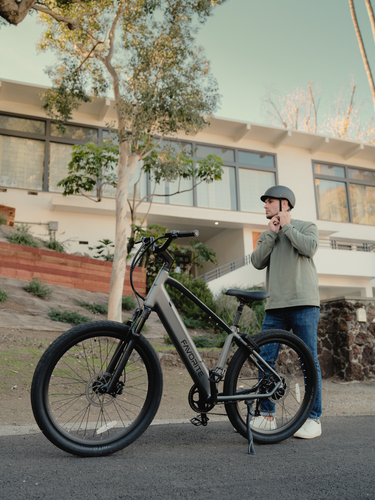
How to Choose the Right Bike Helmet
If you’re here, chances are you already understand the importance of wearing a helmet when biking. Helmets aren’t just accessories; they’re essential safety gear designed to protect your most valuable asset—your brain. And while safety is the top priority, you don’t have to sacrifice style or comfort when choosing the right one. Here’s everything you need to know to find the perfect bike helmet, from fit and sizing to style and safety standards.
Understanding Bike Helmet Anatomy
A bike helmet consists of three key parts: the shell, the liner, and the strap.
- The Shell: This outer layer is made of impact-resistant materials like polycarbonate, plastic, or carbon fiber. It serves as the first line of defense, helping to spread out and reduce the force of an impact.
- The Liner: This inner layer, usually made of EPS (Expanded Polystyrene) foam, is designed to absorb impact energy, providing a cushion for your head.
- The Straps: Located on each side and secured under your chin, straps keep the helmet securely in place. Durable and adjustable straps ensure that the helmet covers your head adequately, enhancing protection.
Each part plays a crucial role in safety, so understanding this structure helps you choose a helmet that performs well under pressure.
Key Considerations Before Buying
Before diving into styles and sizes, here are a few crucial factors to keep in mind:
- Material Quality: Choose high-quality, durable materials. Cheap helmets may use plastic similar to that found in water bottles—best to avoid these.
- Weight: Lightweight yet sturdy materials reduce strain and make longer rides more comfortable.
- Safety Certifications: Look for helmets that meet the CPSC Safety Standard, which is the basic requirement for bike helmets in the U.S. Additionally, some helmets come with Multi-directional Impact Protection System (MIPS) technology. MIPS includes a thin inner layer that helps reduce rotational forces during a crash.
- Fit: Your helmet should fit snugly but not feel overly tight. A good fit ensures optimal protection.
- Price: While it’s tempting to go for the cheapest option, remember that a reliable helmet is a priceless investment in your safety.
Types of Bike Helmets
Different types of bike helmets are designed for various riding styles and conditions:
- Commuter/Recreational Helmets: These helmets are ideal for city commuters and casual riders, offering good ventilation and full head coverage.
- Cross-Country (Road Bike) Helmets: Lightweight with plenty of ventilation, these helmets are built for long rides, reducing wind resistance and keeping you cool.
- All-Mountain/Trail Helmets: With extra coverage around the back of the head, these helmets provide enhanced protection, perfect for riders who venture onto trails and rougher terrain.
Helmet Sizing: How to Get the Right Fit
To find the perfect size, measure your head and consult the manufacturer’s size chart. Here’s how:
- Measuring Your Head: Use a flexible measuring tape around your head just above your eyebrows and ears. Most helmet size charts are in centimeters, so measure accordingly.
-
Size Guide: Here’s a general idea of helmet sizing:
- Extra Small: below 20 ½ inches (53 cm)
- Small: 20 ½ - 21 ¼ inches (53-54 cm)
- Medium: 21 ¼ - 22 ¾ inches (54-57 cm)
- Large: 22 ¾ - 24 ⅛ inches (57-61 cm)
- Extra Large: above 24 ⅛ inches (61 cm)
How Should a Bike Helmet Fit?
Once you’ve chosen the right size, follow these steps for the perfect fit:
- Level Fit: Place the helmet level on your head, covering most of your forehead—about an inch above your eyebrows. This ensures maximum protection.
- Adjust the Retention System: Many helmets have a rear adjustment wheel to customize fit. Tighten until the helmet feels secure but comfortable.
- Check Chin Straps: Buckle the chin straps and adjust so they form a “Y” shape just under each ear. When buckled, the straps should be snug but not restrictive.
- Safety Test: Open your mouth wide. If the helmet presses against the top of your head, the fit is secure. Perform this test before each ride to make sure your helmet hasn’t loosened over time.
Final Thoughts
With so many options available, picking the right helmet might seem overwhelming at first. But once you know what to look for—like the right fit, materials, and certification—it becomes easier to narrow down your choices. Remember, the best helmet isn’t necessarily the most expensive; it’s the one that balances protection, comfort, and style while meeting safety standards. Your perfect helmet is out there, and finding it is worth the peace of mind that comes from knowing you’re safe on every ride.
Read More
1.Helmets & Safety Gear
2.Do I have to wear a helmet when riding an ebike?
No comments










0 comments